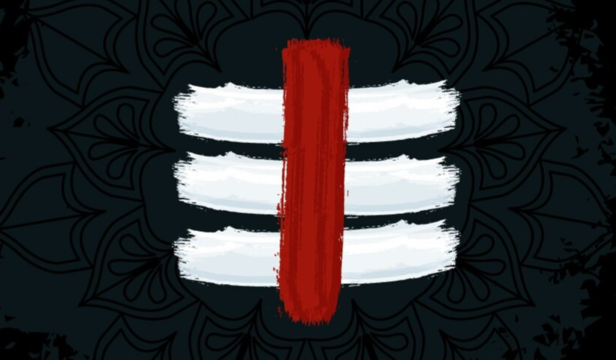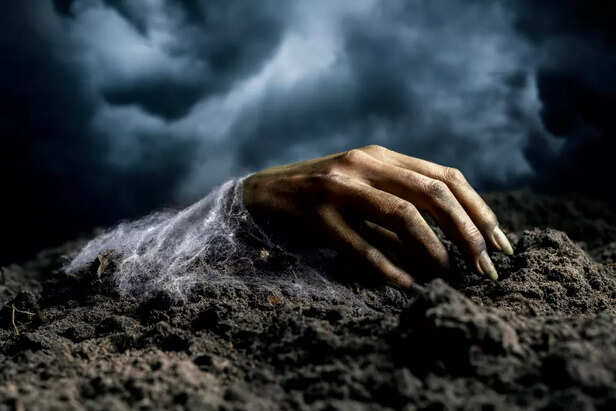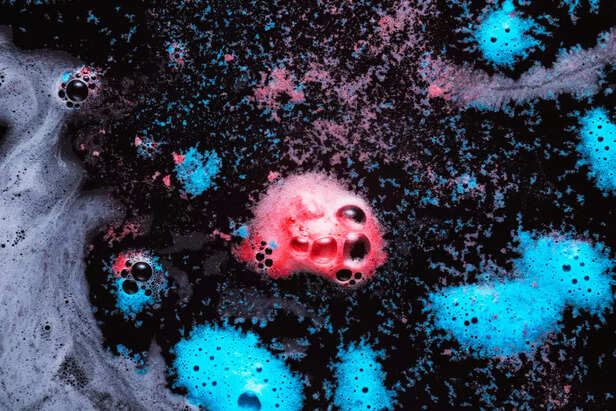Die, O Yogi, Die; this Death Is Pleasing
Ankit Gupta | Feb 16, 2025, 11:51 IST
Death is the ultimate paradox—both an end and a beginning, a certainty that looms over every living being, yet an enigma wrapped in layers of mystery. here, we explore the philosophical, psychological, and spiritual dimensions of embracing symbolic death to liberate ourselves from the chains of existential dread.
Despite its inevitability, humanity has spent millennia wrestling with the fear of death, weaving myths, crafting religions, and building philosophies to find meaning in the void. But what if the way to conquer this fear is not to escape it, but to embrace it? What if the secret to overcoming death is to die every day? The idea of “dying every day” is not literal; rather, it is a philosophical exercise, a transformation of mindset that allows individuals to detach from their ego, desires, and attachment to permanence. It is a practice of constant renewal, shedding past versions of ourselves, and preparing our souls to transition without fear.

From the moment we become conscious beings, we are aware of our mortality. The very fabric of human culture has been shaped by this awareness, from ancient funeral rites to modern medical advancements aimed at prolonging life. The fear of death, known as thanatophobia, is not just a psychological condition but a deeply ingrained aspect of human nature.
Philosophers such as Epicurus argued that death should not be feared because “when we are, death is not, and when death is, we are not.” Yet, despite this rational approach, the fear persists. The existentialists, including Sartre and Heidegger, took a different route, suggesting that acknowledging death is the key to living an authentic life. Heidegger, in particular, introduced the concept of “being-towards-death,” emphasizing that only by fully embracing our mortality can we truly grasp the essence of life.
In the East, the idea of dying every day has deep roots in spiritual traditions. Buddhism teaches the concept of Anicca (impermanence), encouraging practitioners to detach from the illusion of permanence. The practice of meditation itself is often described as a “small death,” where the ego dissolves, and the individual merges into the vastness of existence.
Similarly, the Bhagavad Gita presents the notion that the soul is eternal, and what we perceive as death is merely a transition. Lord Krishna advises Arjuna not to mourn the inevitable, reinforcing that the destruction of the body is not the destruction of the self. In Zen Buddhism, monks are instructed to contemplate their death daily to cultivate a sense of presence and acceptance.
In Sufi mysticism, poets like Rumi and Kabir emphasize the need to "die before you die," urging seekers to let go of attachments, desires, and ego while still alive to experience spiritual liberation.
Samurai warriors, influenced by Zen philosophy, followed the Bushido code, which advised them to meditate on their death every day so that they could live fearlessly and die with honor. To them, dying daily was not a morbid obsession but a strategy for achieving mental clarity and unwavering courage.

"Maro Hey Jogi Maro" is a profound verse attributed to the great Nath yogi and mystic, Gorakhnath. This phrase, in essence, urges the seeker to "die" while living—a call for inner transformation, ego dissolution, and spiritual rebirth.
In the Nath tradition, this "death" is not physical but symbolic. It refers to the shedding of attachments, desires, and illusions of the self. It aligns with the concept of "Jivanmukti"—liberation while still alive.
In the spiritual traditions of India, death has often been viewed not as an end but as a passage. The great sages and mystics have taught that if one can "die" before the physical body perishes, they will never fear death again. This "death" is the surrender of all identifications—the ego, the mind, the body, and worldly attachments—so that the true self can emerge.
Gorakhnath’s command to “die” is a call to dissolve illusions and be reborn in a higher consciousness. It is about:

Modern psychology echoes these ancient insights. The concept of ego death, popularized by thinkers like Carl Jung and later explored in psychedelic research, suggests that the dissolution of the self leads to profound personal transformation. When individuals experience ego death—whether through meditation, psychedelic experiences, or intense existential reflection—they often report a deep sense of unity with the universe, a shedding of superficial fears, and a newfound appreciation for life.
The notion of continuous death is deeply tied to the concept of ego death, a state in which an individual experiences a dissolution of self-identity. Carl Jung discussed the process of individuation, where parts of the self "die" to allow the emergence of a more integrated personality. Similarly, Sigmund Freud’s psychoanalytic theory suggests that every transition in life involves the loss of an old self and the birth of a new one.
Modern psychological research, particularly in the realm of positive psychology, explores the impact of mindfulness and acceptance of impermanence. Studies show that individuals who embrace change and the transient nature of life experience lower anxiety and greater psychological well-being. By recognizing that death occurs in every moment—whether through the loss of an identity, an attachment, or a phase of life—individuals cultivate resilience and adaptability.
Viktor Frankl, in his seminal work Man’s Search for Meaning, emphasized that when individuals find purpose beyond themselves, they transcend the fear of death. Frankl’s experiences in Nazi concentration camps demonstrated that those who saw life as meaningful, even in the face of extreme suffering, had a greater ability to endure and accept death.
By metaphorically “dying” each day—letting go of grudges, outdated beliefs, and the illusion of control—we free ourselves from unnecessary suffering. Each symbolic death paves the way for rebirth, a psychological renewal that aligns us with a life of authenticity and presence.
Death Occurs at Every Moment
Death is often perceived as the final event marking the end of physical existence, yet a deeper understanding reveals that death is not a singular occurrence but an ongoing process. The phrase "Death occurs at every moment" captures the essence of continuous change and impermanence in life. This idea resonates across philosophical traditions, psychological insights, and spiritual doctrines, emphasizing that life is a series of transitions, each moment dissolving into the next, leaving behind a past self to make way for a new one.
This essay explores the multifaceted dimensions of death as a perpetual phenomenon. From the perspectives of existential philosophy, Buddhist impermanence, psychological transformation, and modern scientific insights, we will analyze how the awareness of continuous death can serve as a tool for deeper self-understanding, acceptance, and a more profound engagement with life.
Philosophers throughout history have pondered the nature of death, questioning whether it is an end or a transition. Heraclitus, the pre-Socratic philosopher, famously declared, "No man ever steps in the same river twice," highlighting the fluidity of existence. Everything changes; everything perishes and is reborn in a new form. In this sense, death is not a one-time event but a constant reality of existence.
Martin Heidegger, in Being and Time, introduced the concept of "being-towards-death." He argued that human beings exist in a state of anticipation of death, and this awareness is crucial for an authentic life. Heidegger's existential approach suggests that understanding death as a continuous event helps individuals transcend superficial concerns and live with deeper purpose.
Jean-Paul Sartre, another existentialist, viewed death as the ultimate nothingness. However, rather than inducing despair, he saw it as a call to action: since life is finite and each moment is fleeting, we must create our own meaning. Thus, if death is occurring at every moment, so too is the opportunity for renewal and self-definition.

Science also provides evidence that death is an ongoing process rather than a singular event. On a cellular level, apoptosis, or programmed cell death, occurs continuously within the human body. Billions of cells die and regenerate daily, maintaining physiological balance and health. Without this constant cellular death, life itself would not be possible.
Furthermore, neuroscience reveals that our brains are in a constant state of change. Neural pathways are pruned and reshaped throughout life, meaning that the "self" we identify with today is not the same as the one from years ago. Memories fade, identities evolve, and experiences transform us—each of these moments represents a form of death.
Conclusion:
 To die every day is to live without fear. It is to walk through life unburdened by the illusions of permanence and the anxieties of the unknown. By symbolically dying each day, we do not diminish life; rather, we amplify its meaning. We sharpen our focus, embrace authenticity, and cultivate a fearless spirit.
To die every day is to live without fear. It is to walk through life unburdened by the illusions of permanence and the anxieties of the unknown. By symbolically dying each day, we do not diminish life; rather, we amplify its meaning. We sharpen our focus, embrace authenticity, and cultivate a fearless spirit.
Ultimately, those who practice daily death achieve a form of immortality—not in the literal sense, but in the way they impact the world. They live with such presence and purpose that their essence continues beyond their physical existence. Their legacy, like ripples in a vast ocean, extends into eternity.
The statement "Death occurs at every moment" is not a mere philosophical abstraction but a reality woven into the fabric of existence. From the continuous death of cells to the dissolution of identities and the impermanence of thoughts, death is not an event that awaits us in the future but an ongoing, ever-present process.
Philosophy, psychology, spirituality, and science all converge on the idea that by embracing the transient nature of life, we liberate ourselves from fear and cultivate a deeper appreciation for the present. The practice of dying every moment—whether through letting go of the past, dissolving the ego, or accepting change—allows us to live more fully. In this realization, death ceases to be an enemy and becomes a profound teacher, guiding us toward a richer, more meaningful existence.
In a world obsessed with avoiding death, perhaps the bravest act is to face it head-on—to make peace with it before it arrives. By dying every day, we transform the greatest fear into our greatest teacher, and in doing so, we truly learn what it means to live.
The Existential Grip of Death

Patience in Eternity
From the moment we become conscious beings, we are aware of our mortality. The very fabric of human culture has been shaped by this awareness, from ancient funeral rites to modern medical advancements aimed at prolonging life. The fear of death, known as thanatophobia, is not just a psychological condition but a deeply ingrained aspect of human nature.
Philosophers such as Epicurus argued that death should not be feared because “when we are, death is not, and when death is, we are not.” Yet, despite this rational approach, the fear persists. The existentialists, including Sartre and Heidegger, took a different route, suggesting that acknowledging death is the key to living an authentic life. Heidegger, in particular, introduced the concept of “being-towards-death,” emphasizing that only by fully embracing our mortality can we truly grasp the essence of life.
The Concept of Daily Death in Eastern Philosophy
Similarly, the Bhagavad Gita presents the notion that the soul is eternal, and what we perceive as death is merely a transition. Lord Krishna advises Arjuna not to mourn the inevitable, reinforcing that the destruction of the body is not the destruction of the self. In Zen Buddhism, monks are instructed to contemplate their death daily to cultivate a sense of presence and acceptance.
In Sufi mysticism, poets like Rumi and Kabir emphasize the need to "die before you die," urging seekers to let go of attachments, desires, and ego while still alive to experience spiritual liberation.
Samurai warriors, influenced by Zen philosophy, followed the Bushido code, which advised them to meditate on their death every day so that they could live fearlessly and die with honor. To them, dying daily was not a morbid obsession but a strategy for achieving mental clarity and unwavering courage.
"Maro hey Jogi Maro, Maro yeh Maran hai Meetha" – The Death That Leads to True Life

Death being contemplated through the parallel lines
"Maro Hey Jogi Maro" is a profound verse attributed to the great Nath yogi and mystic, Gorakhnath. This phrase, in essence, urges the seeker to "die" while living—a call for inner transformation, ego dissolution, and spiritual rebirth.
In the Nath tradition, this "death" is not physical but symbolic. It refers to the shedding of attachments, desires, and illusions of the self. It aligns with the concept of "Jivanmukti"—liberation while still alive.
In the spiritual traditions of India, death has often been viewed not as an end but as a passage. The great sages and mystics have taught that if one can "die" before the physical body perishes, they will never fear death again. This "death" is the surrender of all identifications—the ego, the mind, the body, and worldly attachments—so that the true self can emerge.
Gorakhnath’s command to “die” is a call to dissolve illusions and be reborn in a higher consciousness. It is about:
- Killing desires that bind us to suffering
- Shedding false identities that keep us trapped
- Letting go of fear and attachments that cloud our vision
Psychological Liberation Through Symbolic Death

Rising from the ignorance
Modern psychology echoes these ancient insights. The concept of ego death, popularized by thinkers like Carl Jung and later explored in psychedelic research, suggests that the dissolution of the self leads to profound personal transformation. When individuals experience ego death—whether through meditation, psychedelic experiences, or intense existential reflection—they often report a deep sense of unity with the universe, a shedding of superficial fears, and a newfound appreciation for life.
The notion of continuous death is deeply tied to the concept of ego death, a state in which an individual experiences a dissolution of self-identity. Carl Jung discussed the process of individuation, where parts of the self "die" to allow the emergence of a more integrated personality. Similarly, Sigmund Freud’s psychoanalytic theory suggests that every transition in life involves the loss of an old self and the birth of a new one.
Modern psychological research, particularly in the realm of positive psychology, explores the impact of mindfulness and acceptance of impermanence. Studies show that individuals who embrace change and the transient nature of life experience lower anxiety and greater psychological well-being. By recognizing that death occurs in every moment—whether through the loss of an identity, an attachment, or a phase of life—individuals cultivate resilience and adaptability.
Viktor Frankl, in his seminal work Man’s Search for Meaning, emphasized that when individuals find purpose beyond themselves, they transcend the fear of death. Frankl’s experiences in Nazi concentration camps demonstrated that those who saw life as meaningful, even in the face of extreme suffering, had a greater ability to endure and accept death.
By metaphorically “dying” each day—letting go of grudges, outdated beliefs, and the illusion of control—we free ourselves from unnecessary suffering. Each symbolic death paves the way for rebirth, a psychological renewal that aligns us with a life of authenticity and presence.
Death Occurs at Every Moment

Drifting in serenity
Death is often perceived as the final event marking the end of physical existence, yet a deeper understanding reveals that death is not a singular occurrence but an ongoing process. The phrase "Death occurs at every moment" captures the essence of continuous change and impermanence in life. This idea resonates across philosophical traditions, psychological insights, and spiritual doctrines, emphasizing that life is a series of transitions, each moment dissolving into the next, leaving behind a past self to make way for a new one.
This essay explores the multifaceted dimensions of death as a perpetual phenomenon. From the perspectives of existential philosophy, Buddhist impermanence, psychological transformation, and modern scientific insights, we will analyze how the awareness of continuous death can serve as a tool for deeper self-understanding, acceptance, and a more profound engagement with life.
The Philosophical Perspective: Death as a Continuous Process
Martin Heidegger, in Being and Time, introduced the concept of "being-towards-death." He argued that human beings exist in a state of anticipation of death, and this awareness is crucial for an authentic life. Heidegger's existential approach suggests that understanding death as a continuous event helps individuals transcend superficial concerns and live with deeper purpose.
Jean-Paul Sartre, another existentialist, viewed death as the ultimate nothingness. However, rather than inducing despair, he saw it as a call to action: since life is finite and each moment is fleeting, we must create our own meaning. Thus, if death is occurring at every moment, so too is the opportunity for renewal and self-definition.
Scientific Perspectives: Cellular and Biological Death

Reorganizing Cells in motion
Science also provides evidence that death is an ongoing process rather than a singular event. On a cellular level, apoptosis, or programmed cell death, occurs continuously within the human body. Billions of cells die and regenerate daily, maintaining physiological balance and health. Without this constant cellular death, life itself would not be possible.
Furthermore, neuroscience reveals that our brains are in a constant state of change. Neural pathways are pruned and reshaped throughout life, meaning that the "self" we identify with today is not the same as the one from years ago. Memories fade, identities evolve, and experiences transform us—each of these moments represents a form of death.
Conclusion: Immortality Through Transcendence

Emerging through Death
Ultimately, those who practice daily death achieve a form of immortality—not in the literal sense, but in the way they impact the world. They live with such presence and purpose that their essence continues beyond their physical existence. Their legacy, like ripples in a vast ocean, extends into eternity.
The statement "Death occurs at every moment" is not a mere philosophical abstraction but a reality woven into the fabric of existence. From the continuous death of cells to the dissolution of identities and the impermanence of thoughts, death is not an event that awaits us in the future but an ongoing, ever-present process.
Philosophy, psychology, spirituality, and science all converge on the idea that by embracing the transient nature of life, we liberate ourselves from fear and cultivate a deeper appreciation for the present. The practice of dying every moment—whether through letting go of the past, dissolving the ego, or accepting change—allows us to live more fully. In this realization, death ceases to be an enemy and becomes a profound teacher, guiding us toward a richer, more meaningful existence.
In a world obsessed with avoiding death, perhaps the bravest act is to face it head-on—to make peace with it before it arrives. By dying every day, we transform the greatest fear into our greatest teacher, and in doing so, we truly learn what it means to live.
